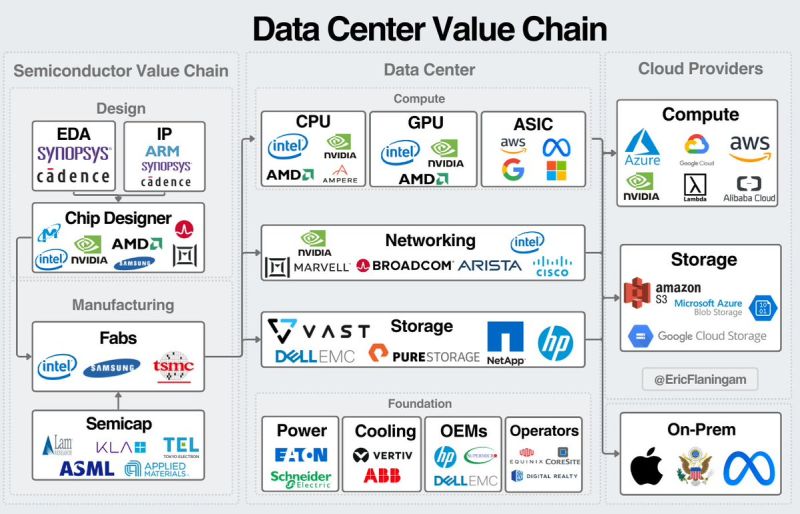How Generative AI is overhauling Data Centers
The data center of the future is not just an incremental update; it’s a radical re-envisioning to meet the demands of Generative AI.
We are on the cusp of a transformation from CPU-centric to GPU-centric infrastructures, a shift that will redefine how we approach data processing and artificial intelligence.
1. Unprecedented Compute Requirements: Generative AI models require the kind of parallel processing prowess that GPUs are uniquely equipped to provide. Which means the value chain of data center business needs to be reconfigured to meet this new demand.
2. Data Throughput and Efficiency: As data centers pivot to power-hungry GPU-centric operations, we’ll see a significant leap in throughput and energy efficiency, critical for scaling AI applications.
3. Network and Storage Synergy: The shift also necessitates an evolution in networking and storage solutions, ensuring they keep pace with the high-speed, high-volume demands of GPU-powered AI.
4. Redefining Data Center Architecture: The traditional data center design is being reimagined to accommodate the heat, power, and space GPUs demand, which is starkly different from that of CPUs.
5. Energy needs: the additional compute and storage needs will create additional demand for electricity and power generation that go beyond today’s grid capacities. This is going to be a major transformation area for energy generation to energy storage.
As we transition into this new era, it’s essential for us to understand the magnitude of change and prepare for the opportunities generative AI offers.
What are your thoughts on the evolution of the Data Center due to AI?
#DataCenters #GPUs #CPUs #GenerativeAI #InfrastructureEvolution #TechTrends #AIReady

